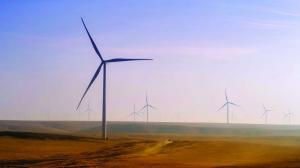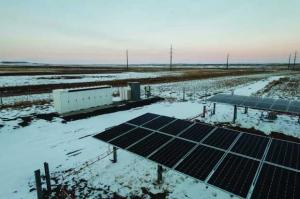How Platte River Power Authority Is Accelerating Its Energy Transition
Platte River Power Authority, the community-owned wholesale electricity provider for Northern Colorado, has a history of bold initiatives.
FORT COLLINS, CO, USA, April 5, 2024 /EINPresswire.com/ -- Platte River Power Authority, the community-owned wholesale electricity provider for Northern Colorado, has a history of bold initiatives. They were among the first utilities in the country to add scrubber technology, known as spray dryer absorber, on their coal-fired generation to reduce emissions. They became the first utility in Colorado to bring wind energy online. And in 2018, Platte River adopted a Resource Diversification Policy outlining a decarbonization goal by 2030 long before Colorado established statewide policies.
Environmental stewardship is a Platte River core value, together with a commitment to reliability and affordability. The utility began with hydropower, which remains a key noncarbon-emitting dispatchable resource.
Platte River’s wind generation has grown seven-fold and solar generation is expected to triple through 2025.
“We are committed to adding more renewable energy to our portfolio for a clean, sustainable energy future,” shares Jason Frisbie, CEO of Platte River. “Since the passage of our Resource Diversification Policy, we’ve been challenged in nearly every aspect of this accelerated energy transition. With the support of our board of directors and deeply committed staff, we remain focused on achieving a noncarbon energy future.”
Platte River Power Authority, the community-owned wholesale electricity provider for Northern Colorado, has a history of bold initiatives. They were among the first utilities in the country to add scrubber technology, known as spray dryer absorber, on their coal-fired generation to reduce emissions. They became the first utility in Colorado to bring wind energy online. And in 2018, Platte River adopted a Resource Diversification Policy outlining a decarbonization goal by 2030 long before Colorado established statewide policies.
Environmental stewardship is a Platte River core value, together with a commitment to reliability and affordability. The utility began with hydropower, which remains a key noncarbon-emitting dispatchable resource.
Platte River’s wind generation has grown seven-fold and solar generation is expected to triple through 2025.
“We are committed to adding more renewable energy to our portfolio for a clean, sustainable energy future,” shares Jason Frisbie, CEO of Platte River. “Since the passage of our Resource Diversification Policy, we’ve been challenged in nearly every aspect of this accelerated energy transition. With the support of our board of directors and deeply committed staff, we remain focused on achieving a noncarbon energy future.”
Since 2018, Platte River has added nearly one million megawatt-hours of renewable energy to the system, including wind and solar and two-hour battery storage, demonstrating their commitment to move boldly toward a clean energy future. Platte River achieved a significant milestone when they joined an energy imbalance market in 2023, with plans underway to join a full organized energy market in spring 2026. And last year marked the first time Platte River supplied more power from renewable energy and surplus energy market purchases than it self-generated through coal and gas fired generation combined.
While utilities across the country are developing plans to transition to cleaner generation technologies in the next decade or two, Platte River’s accelerated transition over the next several years presents unique challenges. The utility is addressing these challenges by deploying more wind and solar projects and taking a three-pronged approach to dispatchable capacity. This includes battery storage, a virtual power plant within the owner communities, and aeroderivative turbine technology, all to maintain system reliability.
Along with the clean energy transition, Platte River must navigate persistent effects from the global pandemic, including supply chain issues, inflation and rising capital costs. Much of this transition relies on emerging technologies with fewer qualified contractors, increasing demand and competition for renewable generation projects. Once contracts are signed, permitting and construction processes begin, all of which take time and can present their own hurdles.
Still, Platte River is determined to make this energy transition equitably for the four communities it has proudly served for more than 50 years.
“As part of our clean energy transition, our strategy balances the three foundational pillars that inform and guide our operations,” says Wendy Koenig, Town of Estes Park mayor and Platte River board member. “Accelerating clean energy technologies for this transition at the wholesale level helps maximize the benefit for all community members in Platte River’s service region, no matter their financial background.”
To learn more about Platte River’s commitment to a clean energy future, visit prpa.org/future.
Communications
Platte River Power Authority
+1 (970) 226-4000
email us here
Visit us on social media:
Facebook
Twitter
Legal Disclaimer:
EIN Presswire provides this news content "as is" without warranty of any kind. We do not accept any responsibility or liability for the accuracy, content, images, videos, licenses, completeness, legality, or reliability of the information contained in this article. If you have any complaints or copyright issues related to this article, kindly contact the author above.


